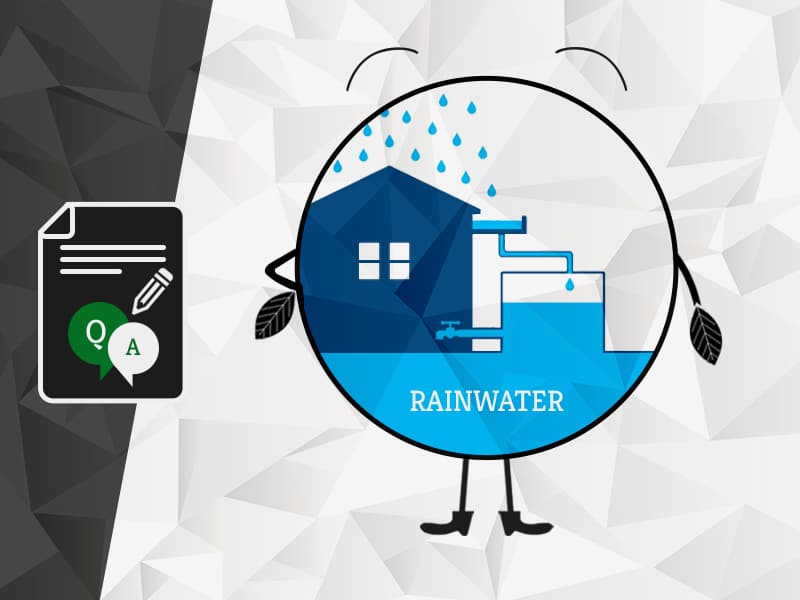No products in the cart.
Related
Summary

Article Name
What type of filters are required for Rainwater Harvesting?
Description
Before storing harvested rainwater, it needs to be filtered to ensure that it is kept in the best possible condition, to avoid degradation of biological material, development of odours etc.Rainwater harvesting systems may have different types of filters.
Author
Team GreenSutra
Publisher Name
GreenSutra
Publisher Logo
Question Tags: actonclimate, climate change, expertscorner, globalwarming, greenhouse effect, greensutra, rain, rainwater, rainwater harvesting, savewater, Waste, Water, water wastage
1 Answers
Best Answer
 Team GreenSutra® Staff answered 6 years ago
Team GreenSutra® Staff answered 6 years ago
Before storing harvested rainwater, it needs to be filtered to ensure that it is kept in the best possible condition, to avoid:
- Degradation of Biological Material
- Development of Odours
Rainwater harvesting systems may have different types of filters.
- Mechanical Pre-tank Filters: Stopping contaminants from entering the rainwater harvesting storage tank is the most most effective way of keeping rainwater clean. To achieve this, most systems use a pre-tank or in-tank filter. The degree of filtration can be controlled by the fineness of the mesh which is measured in microns. The lower the micron rating, the finer the degree of filtration.
- Microscopic Filtration: Use of particulate filters offers a much finer degree of filtration. Particulate filters are generally in the form of a sealed housing containing a cartridge or bag which traps very fine particles to provide an even cleaner standard of water which require periodic changing. For these filters to operate efficiently, they require pressure. Due to this, such filters are only found on externally pumped systems.
- Disinfection: While mechanical filters are effective at removing particles from water, they cannot remove bacteria. This is not an issue if the use of water is going to be for purposes of flushing, washing and gardening. Additional step of disinfection becomes mandatory, if the rainwater is also destined for personal use; drinking, showering, etc.
- Carbon Filters: Carbon Filters are used in cases where rainwater is to be used for purposes such as drinking. Passing water through carbon helps improve the taste and odour significantly and also discolouration to a degree. Carbon is also effective at removing chlorine and other volatile organic substances (VOCs).
Here are some examples of these filter systems:
- Sand Gravel Filter: These filters are made using bricks which are then filled with three layers of pebbles, gravel, and sand each that are separated using a wire mesh. These are commonly used filters, constructed by brick masonry and filleted by pebbles, gravel, and sand as shown in the figure. Each layer should be separated by wire mesh.
- Charcoal filters: These filters can be made on site using a drum with three layers of gravel, sand and finally charcoal that are separated using a wire mesh. The charcoal in this filter also helps in absorbing any foul odor if it is present.
- PVC- Pipe filter: These filters that can be placed both horizontally or vertically are made using PVC pipes of a diameter of 6-8 inches and length of 1-1.2 meter. The pipe is then divided into three layers which are separated by a wire mesh. The first layer has gravel, the second layer has charcoal and the third layer has sand. The ends of the filters should have a reduced size that matches the size of the inlet and outlet.
- Sponge Filter: This filter is made using a PVC drum with a layer of sponge in the middle of the drum. This filter is quite suitable for home use. It is also the cheapest kind of filter.
